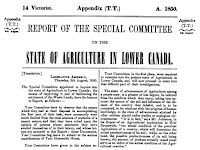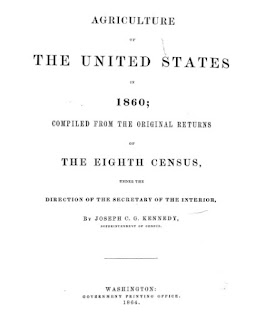This editorial from the Advertiser began by citing the views of a French (of France) writer who wrote in English under the nom de plume Max O’Rell. O’Rell gave his impression of the French émigré in Victorian England. “You will meet there," wrote O’Rell, “a type of Frenchman who, after residing 10, 15, 20 years in England, cannot speak English. He is proud of it, and sometimes wonders that, with so many Frenchmen in England, the English do not speak French by this time.”
O’Rell’s characterization, writes the Advertiser, “has a meaning for Americans which, perhaps, they little suspect.” But the Advertiser had a different type of “Frenchman” in mind:
It was not long since that we called attention…to a warning sent up by a writer in the Forum against the French-Canadians, who are flocking into this country in unsuspected numbers. The French-Canadian is the same man as that drawn by Max O'Rell, only, be it remarked, completely lacking in his education and his intelligence. Consequently his refusal to be anything but a Frenchman, to take any interest whatever in his adopted country is even if possible, still more complete. His attitude is one of sullen and dogged opposition to anything that tends to change him from what he is.The Forum referenced here was a respected national magazine of its day, a competitor with the likes of The Atlantic Monthly and Harper’s. The magazine took a lively interest in the French-Canadian influx in this period, and I plan to explore its contents in future posts.
The Advertiser goes on to cite St. Johnsbury’s local paper – no doubt the reason The Caledonian reprinted the piece. Continues the Advertiser,
The following quotation from the St. Johnsbury (Vt.) Caledonian will prove interesting…"The French Canadians," [The Caledonian] says, "are coming into Vermont in great numbers. They already own a good share of the farms in the northern tier of counties and are filling the manufacturing towns with operatives of both sexes, and laborers in all departments of industry and trade. When it is known that in a place no larger than St. Johnsbury (which had but 5800 inhabitants in 1880), the parish priest numbers his parish at between 1900 and 2000 souls, the increase of the Canadian element into Vermont begins to be appreciated."The “school law” in question would either ban any language but English in schools, or it would abolish private schools, obliging all children to attend a public school where English would be the language of instruction. Several states passed legislation of this ilk in the wake of the First World War. The most "stringent" of these state laws were struck down by the U.S. Supreme Court.1
Now, what is said of Vermont is true also of Massachusetts and other New England states. It is believed to be true, also, that the Roman church is encouraging the emigration, and encouraging also the French determination to remain French. There is danger in this. We do not want a nation within a nation. We want no man here who is not, potentially at least an American. If immigrants won't sing Yankee Doodle, they must be made to sing it. With mature French-Canadians probably nothing can be done ; with the children something is possible. If we wish not to have an alien and connected body among us, armed with great power by a ballot which they will use, if at all, to further their own interests and not those of their adopted country, we must have a stringent school law, and moreover enforce it well.
Letter From A Priest
 |
Source:
|
In the following week’s edition of The Caledonian (October 17, 1889), Fr. J. A. Boissonnault, the parish priest at Notre Dame des Victoires church of St. Johnsbury, responded to the paper’s coverage of the French-Canadian element in New England.2 Having his parish census cited in the Boston Advertiser and The Caledonian as evincing a sinister French-Canadian invasion of New England, the priest replied to the local paper point by point in a letter to the editor.
“I find in your issue of last week,” writes Fr. Boissonnault, “…a reference to some writings of Max O'Rell and the Boston Advertiser, in regard to the French Canadian element in the New England states. As both writers seem to have been inspired to speak thus on account of the census of my parish, please let me state the facts as I gave them to you and at the same time, I will answer in a few words the uncharitable remark [sic] of those gentlemen.”
First, the priest corrects the numbers. Although he found 2,080 “souls” in his parish, not all were French-Canadian. Some 400 consisted of Irish families with an admixture of German Catholics. Father Boissonnault claims that the Catholics of these nationalities were “just the same to me as my own [Canadien] compatriots.”
The priest denies any conspiracy on the part of the Catholic Church to take over New England:
They say that Rome is encouraging the French Canadians to emigrate into the New England states, to Catholicize them….On this point I give them a flat denial. I am a missionary among these people for more than twenty years, and I have not met one single family but which has left Canada against the will of its pastor. The Bishops of Canada do all in their power to encourage the settlement of the public lands of Quebec; they have agents of repatriment [sic] in each of the leading cities of New England. The duty of these agents is to try to have the Canadians return to their own country.Father Boissonnault’s reply bears on the discussion of the conspiracy theory floated in the press and pulpits in the 1880-1900 period, claiming that there was a “tradition,” supposedly known to every French-Canadian, that they were eventually to occupy the Northeast portion of North America and create a new country to be called New France. The priest’s rejoinder is that his French-Canadian parishioners – all of them – left Québec “against the will” of their pastors rather than at their urging. If the priest’s witness is true, then it not only weighs against the conspiracy theory, it also suggests that the French-Canadians were not as controlled by their priests as the U.S. press made out.
Responses to Emigration from Québec
 |
| Notre Dame des Victoires St. Johnsbury, VT |
As Fr. Boissannault indicates, the Québec Church’s response to the challenge of emigration was to open new lands in Québec to settlement, and to encourage the repatriation of the New England French-Canadians in these hinterlands. If Rome were planning a demographic conquest of New England by French-Canadians, then encouraging them to return home hardly fit in with the plan.
Rather than having any settled “tradition” around the emigration movement, as the U.S. press claimed, there were different voices among the Québec elite, each responding to the challenge of emigration. Some did speak of the Franco-Americans’ “providential mission” to catholicize New England, and even of a greater French Catholic state in Northeastern N. America in some future century, these fever dreams giving rise to New England’s fears. Other voices in Québec condemned the emigrants, still others tried to woo them to return home, while others, like Cartier, dismissed them. There were different voices offering various interpretations and assorted solutions to what appeared at the time as an existential threat to the French-Canadian "race."
Language and Schools
The priest used numbers to refute the view that a French-Canadian horde was coming across the border to overwhelm New England. Citing figures from Essex, Lamoille and Caledonia counties in Vermont, Fr. Boissonnault shows that only one in fifty farmers was French-Canadian. Concludes the priest: “I speak for my friends of Saint Johnsbury, establishing the facts just as they are and telling our American friends that they are not in danger of being eaten up by their French neighbors…”
The Editor Responds
The whole point of the Max O'Rell and Advertiser article is contained in one sentence: The danger to a nation of permitting other nationalities to colonize within its domains, not giving hearty allegiance to the laws and customs of the country they adopt….The danger is greater to this nation than it was in '61 when the Southern states demanded state [sic] rights, to settle which this country went through a long and bloody war. This nation is at last waking up to the danger of permitting emigrants to enter its domain who do not come here with the full purpose of obeying its laws, conforming to its customs, acquiring its language and making thorough-going American citizens with all that the term implies.The editor thought that immigration was a greater threat to the country than the Civil War. Without evidence, the editor implies that immigrants resisted obeying the laws of the United States. He also indicates that they do not acquire the English language, ignoring Fr. Boissonnault’s testimony that younger Franco-Americans were learning English in school, as mandated by the U.S. Catholic bishops. Both of my grandfathers learned English in schools that were like the ones Fr. Boissonnault defends.
The Caledonian speaks of American citizens “with all that the term implies.” What does the term imply? For journalist Ferdinand Gagnon, a Franco-American leader of this period, it implied obedience to the laws of the various governments of the U.S., a willingness to defend its flag and to contribute to its economy. If a citizen discharges these duties is that sufficient? Or does the term “American citizen” imply a cultural freight beyond the public responsibilities of citizenship Gagnon cites?
These questions linger 130 years after an exchange between a priest and a newspaper editor in a small Vermont town.
--------------------------
More about the conspiracy theory surrounding the French-Canadian immigrants in my book:
A Distinct Alien Race: The Untold Story of Franco-Americans.
A Distinct Alien Race: The Untold Story of Franco-Americans.
--------------------------
Notes
1. See U.S. Supreme Court, Meyer v. Nebraska, 262 U.S. 390 (1923) and Pierce v. Society of Sisters, 268 U.S. 510 (1925).






